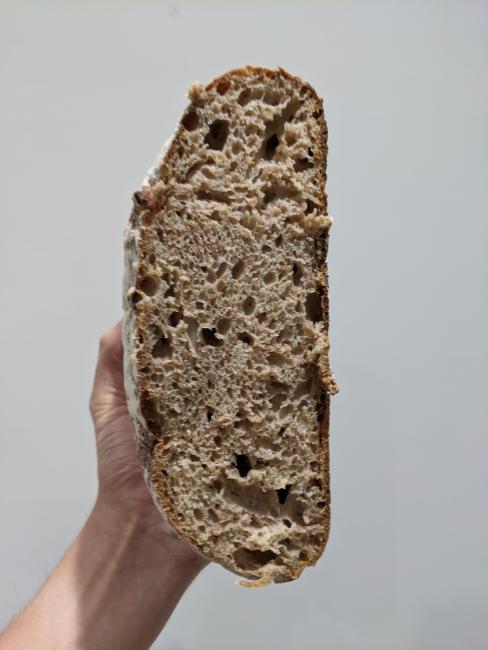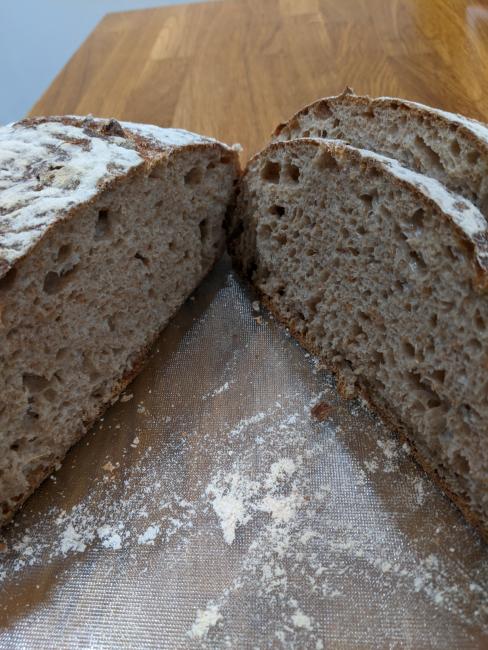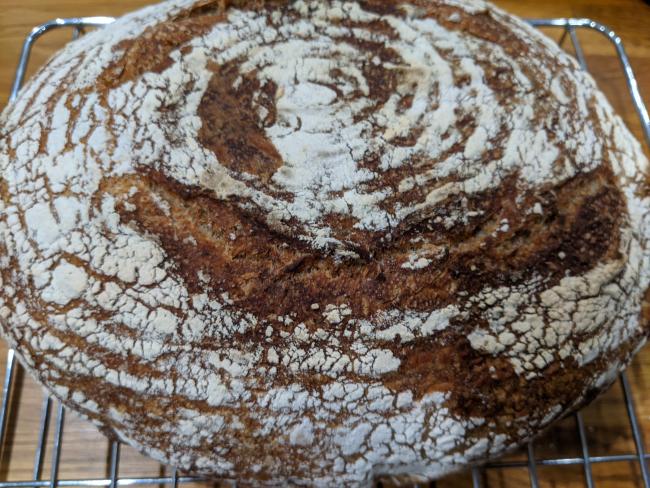
I'd bought a packet of spelt flour a while ago, but hadn't yet got round to baking with it. Spelt is apparently a great substitute to wheat flour, is packed full of vitamins and high in protein. Would it be difficult to bake with?
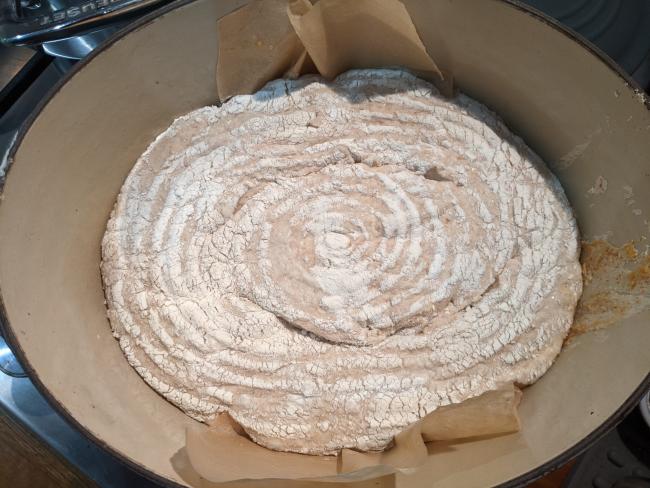
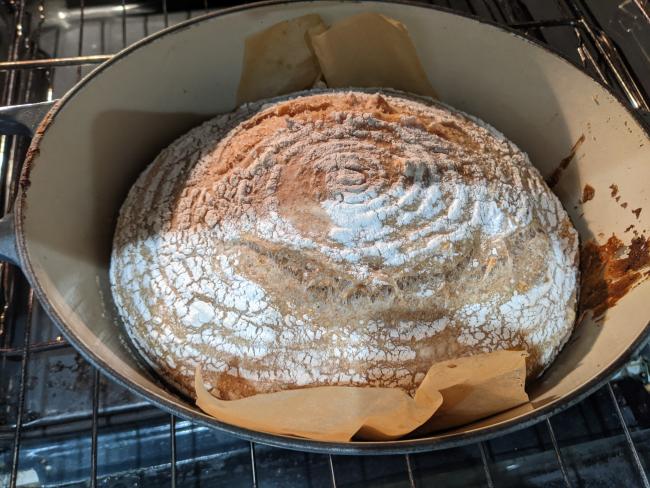
Rather than go 100% spelt, I did a 50/50 mix with wholemeal flour. I wasn't sure how much impact having a completely different flour would make, so thought a 50% mix would ensure there was still something I was used to working with involved. What immediately surprised me was the texture of the spelt flour. It was incredibly absorbent and light and felt like play-doh as I shaped the loaf.
As always: I did a 45-minute autolyse and then three stretch-and-folds at 30-minute intervals followed by a room-temperature bulk rise. Then, a quick lamination and transferred to an oval banneton for its second rise.
I then baked in an oval Dutch oven for 20 minutes at 260C with the lid on and a further 15 minutes at 230C with the lid off.
It seems that spelt flour had really no impact on the quality of the bake and certainly didn't require any additional effort or factors to consider. If anything, I found it a lot easier to use, and more forgiving than wheat flour. If wholemeal flour is extremely thirsty and gets very dry very quickly, spelt is the complete opposite and mixed together you basically get the same consistency and elasticity as a strong white mix. It also tasted incredible. A similar crumb to what I've expected, but a much lighter taste. Definitely one to try again!
